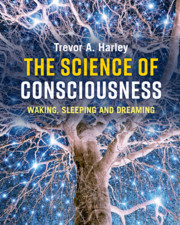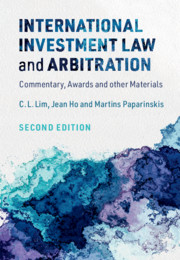Refine search
Actions for selected content:
36807 results in Cambridge Textbooks
Chapter 2 - Children’s perspectives on play
-
- Book:
- Play in the Early Years
- Published online:
- 19 March 2021
- Print publication:
- 24 March 2021, pp 23-40
-
- Chapter
- Export citation
Chapter 7 - Lenses on play: Post-structuralist analyses of children’s play
-
- Book:
- Play in the Early Years
- Published online:
- 19 March 2021
- Print publication:
- 24 March 2021, pp 115-133
-
- Chapter
- Export citation

The Science of Consciousness
- Waking, Sleeping and Dreaming
-
- Published online:
- 19 March 2021
- Print publication:
- 18 February 2021
-
- Textbook
- Export citation

Play in the Early Years
-
- Published online:
- 19 March 2021
- Print publication:
- 24 March 2021
-
- Textbook
- Export citation

International Investment Law and Arbitration
- Commentary, Awards and other Materials
-
- Published online:
- 17 March 2021
- Print publication:
- 11 March 2021
-
- Textbook
- Export citation
Preface to the Second Edition
-
- Book:
- International Investment Law and Arbitration
- Published online:
- 17 March 2021
- Print publication:
- 11 March 2021, pp xvii-xx
-
- Chapter
- Export citation
2 - Cultures of Nationalism
-
- Book:
- The Israel-Palestine Conflict
- Published online:
- 08 March 2021
- Print publication:
- 11 March 2021, pp 15-48
-
- Chapter
- Export citation
Copyright page
-
- Book:
- International Investment Law and Arbitration
- Published online:
- 17 March 2021
- Print publication:
- 11 March 2021, pp iv-iv
-
- Chapter
- Export citation
9 - The Palestinian National Movement Comes of Age
-
- Book:
- The Israel-Palestine Conflict
- Published online:
- 08 March 2021
- Print publication:
- 11 March 2021, pp 209-243
-
- Chapter
- Export citation
11 - Protected Investors
-
- Book:
- International Investment Law and Arbitration
- Published online:
- 17 March 2021
- Print publication:
- 11 March 2021, pp 299-329
-
- Chapter
- Export citation
Preface to the First Edition
-
- Book:
- International Investment Law and Arbitration
- Published online:
- 17 March 2021
- Print publication:
- 11 March 2021, pp xvi-xvi
-
- Chapter
- Export citation
10 - Coming Full Circle: The Era of Oslo
-
- Book:
- The Israel-Palestine Conflict
- Published online:
- 08 March 2021
- Print publication:
- 11 March 2021, pp 244-282
-
- Chapter
- Export citation
Timeline of Events
-
- Book:
- The Israel-Palestine Conflict
- Published online:
- 08 March 2021
- Print publication:
- 11 March 2021, pp 297-302
-
- Chapter
- Export citation
10 - Protected Investments
-
- Book:
- International Investment Law and Arbitration
- Published online:
- 17 March 2021
- Print publication:
- 11 March 2021, pp 276-298
-
- Chapter
- Export citation
Contents
-
- Book:
- International Investment Law and Arbitration
- Published online:
- 17 March 2021
- Print publication:
- 11 March 2021, pp v-xiv
-
- Chapter
- Export citation
20 - New Directions in International Investment Law and Arbitration
-
- Book:
- International Investment Law and Arbitration
- Published online:
- 17 March 2021
- Print publication:
- 11 March 2021, pp 575-616
-
- Chapter
- Export citation
13 - Contingent Standards: National Treatment and Most-Favoured-Nation Treatment
-
- Book:
- International Investment Law and Arbitration
- Published online:
- 17 March 2021
- Print publication:
- 11 March 2021, pp 367-398
-
- Chapter
- Export citation
6 - From the Great Revolt through the 1948 War
-
- Book:
- The Israel-Palestine Conflict
- Published online:
- 08 March 2021
- Print publication:
- 11 March 2021, pp 125-153
-
- Chapter
- Export citation
3 - The Metamorphosis of Investment Treaties
-
- Book:
- International Investment Law and Arbitration
- Published online:
- 17 March 2021
- Print publication:
- 11 March 2021, pp 57-86
-
- Chapter
- Export citation
Acknowledgments
-
- Book:
- International Investment Law and Arbitration
- Published online:
- 17 March 2021
- Print publication:
- 11 March 2021, pp xxi-xxi
-
- Chapter
- Export citation
